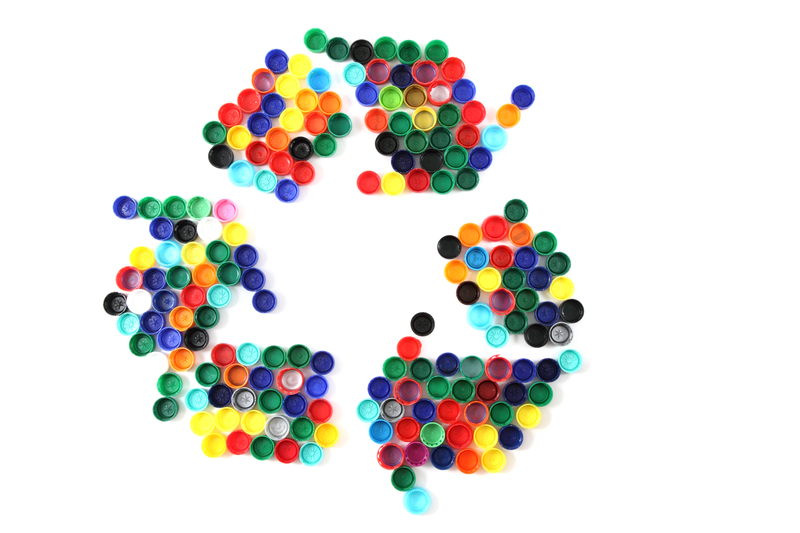Cardboard Packaging: Aligning with Sustainable Goals
Cardboard packaging has steadily become a cornerstone of eco-friendly strategies for businesses aiming to support sustainable goals. As industries worldwide pivot towards greener operations, the intersection of innovative packaging solutions and sustainability is more relevant than ever. This comprehensive article explores how cardboard packaging aligns with, supports, and advances global environmental objectives, backed by detailed analysis and practical recommendations.

The Growing Importance of Sustainable Packaging Solutions
The modern consumer is increasingly conscious of the environmental impact of their choices, driving a market shift towards products and businesses that adopt sustainable practices. Packaging plays a pivotal role in this shift, as it often represents the first tangible contact point between the brand and the consumer.
- Waste Reduction: Packaging waste is a significant contributor to landfills worldwide, making waste-reducing packaging crucial.
- Lower Carbon Footprint: Sourcing renewable or recycled materials can decrease greenhouse gas emissions.
- Resource Efficiency: By using materials more efficiently, businesses consume less while providing the same or better utility.
- Regulatory Compliance: Legislation in many countries mandates reduction of single-use plastics and encourages sustainable alternatives.
Cardboard packaging solutions answer many of these demands, offering a balance between functionality, utility, and environmental stewardship.
What is Cardboard Packaging?
- Corrugated Cardboard: Used mainly for shipping boxes; it provides strength and cushioning.
- Folding Cartons: Common in retail packaging for food, electronics, and cosmetics.
- Rigid Boxes: Utilized for high-end products such as electronics and luxury items.
How Cardboard Packaging Supports Sustainability
To fully understand the alignment of cardboard packaging with sustainability goals, it's important to examine the entire lifecycle of packaging--from raw material sourcing to end-of-life disposal and recycling.
1. Renewable Resources and Responsible Forestry
One of the primary eco-friendly characteristics of cardboard packaging is its origin. Most cardboard is made from wood pulp that comes from responsibly managed forests or from recycled paper.
- Sustainable Forestry: Many manufacturers adhere to certifications such as FSC (Forest Stewardship Council) and PEFC (Programme for the Endorsement of Forest Certification), ensuring that the wood is sourced responsibly.
- Renewable Material: Trees are a renewable resource, and when forests are managed properly, this ensures a continual supply of materials without depleting natural resources.
2. Efficient Manufacturing and Reduced Emissions
The production of cardboard, especially when using recycled content, consumes less energy and water compared to manufacturing virgin plastic packaging.
- Energy Savings: Recycled cardboard requires up to 50% less energy to produce than new cardboard made from raw wood pulp.
- Water Usage: The water consumption for recycled packaging is also dramatically lower, conserving this valuable resource.
- Reduced Emissions: The manufacturing process generates fewer greenhouse gases and pollutants.
3. Lightweight and Optimized Logistics
Cardboard packaging is lightweight yet durable, lowering transportation costs and the environmental impact associated with shipping.
- Lower Transportation Emissions: The lightweight nature translates to less fuel used during delivery, cutting carbon emissions.
- Customizable Sizes: Cardboard can be designed to fit products perfectly, minimizing the need for excess filler material and reducing wasted space.
4. Recyclability and Circular Economy
Perhaps the greatest advantage of cardboard packaging in sustainability is its prolific recyclability. Cardboard can be reused and recycled numerous times before the fibers degrade beyond utility.
- Closed-loop Recycling: Used cardboard is collected, processed, and remade into new packaging, reducing reliance on virgin materials.
- Biodegradability: In the rare event that cardboard enters landfill, it decomposes much faster than synthetics, minimizing environmental harm.
Innovations Advancing eco-friendly Cardboard Packaging
Recent years have witnessed range of innovations in sustainable cardboard packaging, with companies and researchers focusing on both product and process improvement for enhanced sustainability.
Advanced Coatings and Additives
Traditional barriers--such as waxes and foams--used to protect cardboard can hinder recyclability. New water-based, biodegradable coatings are improving resistance to moisture and oil without compromising sustainability.
- Compostable Linings: Vegetable or plant-based linings decompose alongside cardboard.
- Innovative Treatments: Some innovations use nano-technology to create durable, fully recyclable waterproof barriers.
Modular and Reusable Designs
Brands are exploring modular cardboard packaging, designed for multiple uses or convenient repurposing by consumers, thus extending the lifecycle of the material.
- Reusability: Some boxes are engineered for repeated use, especially in e-commerce returns and shipping.
- Easy Disassembly: Flat-pack and snap-together designs support both reusability and efficient recycling.
Digital Printing & Customization Efficiency
Modern digital printing eliminates the need for harmful inks and reduces waste by enabling precise, on-demand production runs.
- Reduced Excess: Print only what's needed, minimizing leftovers and obsolete packaging.
- Eco-friendly Inks: Water-based, non-toxic inks make cardboard easier to recycle and compost.
Business Benefits of Adopting Sustainable Cardboard Packaging
Switching to sustainable cardboard packaging is not just an ethical or environmental choice--it's also a sound business strategy. Companies that pivot toward sustainable packaging solutions enjoy:
- Cost Savings: Improved efficiency, reduced material use, and lower disposal costs.
- Brand Loyalty: Eco-conscious consumers are more likely to support brands with transparent sustainable practices.
- Compliance and Market Access: Meeting regulatory requirements ensures access to global markets and avoids penalties.
- Competitive Advantage: Early adopters often outperform the competition by differentiating their brand and products.
Challenges & Considerations in Sustainable Cardboard Packaging
Despite its many benefits, the journey towards fully sustainable cardboard packaging comes with its own set of challenges:
- Supply Chain Consistency: Sourcing recycled or certified cardboard continually requires strong supplier relationships.
- Contamination: Cardboard contaminated with food, oils, or harmful additives can hinder recycling efforts.
- Protection and Durability Limits: While generally robust, cardboard may not always protect against extreme moisture or heavy loads like some plastics.
- Consumer Education: End-users need clear instructions on recycling or repurposing packaging to maximize sustainability benefits.
Overcoming Barriers to Adoption
- Invest in R&D: Partner with suppliers and academic institutions to explore new coatings and structural improvements.
- Clear Labelling: Use universally recognized recycling symbols and sustainability information on every package.
- Collaboration: Work within industry consortia to set packaging standards and share best practices.
- Customer Feedback: Engage with customers to get insights on usability and the afterlife of packaging.
Cardboard Packaging and the Global Sustainable Development Goals
The United Nations' Sustainable Development Goals (SDGs) provide a blueprint for a better future, emphasizing environmental responsibility, resource management, and social equity. Cardboard packaging aligns with and directly advances several of these key goals:
-
SDG 12 - Responsible Consumption and Production:
Cardboard packaging encourages the efficient use of resources, supports recycling, and fosters sustainable consumption patterns. -
SDG 13 - Climate Action:
Reducing reliance on plastics and embracing low-carbon materials like cardboard cuts carbon emissions and helps combat climate change. -
SDG 15 - Life on Land:
By supporting sustainable forestry, cardboard packaging helps preserve biodiversity and maintain healthy ecosystems.
Best Practices for Adopting Sustainable Cardboard Packaging
Aligning with sustainability goals requires a deliberate and strategic approach. Here's how businesses can maximize the positive impact of their cardboard packaging solutions:
- Audit Current Packaging: Evaluate your packaging inventory for opportunities to reduce material usage and increase recycled content.
- Choose Certified Suppliers: Opt for partners certified by the FSC or PEFC to ensure responsible sourcing.
- Design for Recyclability: Avoid mixed materials (like plastics or metals) unless absolutely necessary for product protection.
- Educate Consumers: Provide clear, simple instructions for recycling or reusing packaging.
- Track Results: Measure the environmental impact and cost efficiency to fine-tune approaches over time.

The Future of Eco-Friendly Cardboard Packaging
Innovation will continue shaping the future of cardboard packaging as technology evolves and environmental demands grow. Expect to see:
- Smart Packaging: Integrated sensors and digital IDs tracking environmental conditions, reducing waste, and enhancing logistics.
- Bio-based Additives: Starches, natural resins, and plant fibers augmenting cardboard's properties without adding synthetic polymers.
- Global Recycling Networks: Expanded infrastructure for efficient cardboard collection and reuse across regions.
- Policy Support: Increased governmental incentives and mandates accelerating the transition from plastic to sustainable cardboard.
Conclusion: Cardboard Packaging and Sustainable Progress
The transition to cardboard packaging aligned with sustainable goals represents both a necessity and an opportunity. For businesses, this alignment is not just about compliance or "greenwashing"--it's a proactive investment in the long-term health of the planet and public trust in their brand.
With ongoing advancements and widespread adoption, **cardboard and paper-based packaging** will likely play a leading role in the movement towards a circular economy, supporting the conservation of resources, mitigation of pollution, and the rejuvenation of ecosystems. For those looking to stay ahead of the curve, now is the time to embrace sustainable packaging practices that benefit both business and the environment.
Cardboard packaging: aligning with sustainable goals is more than an industry trend--it is the foundation for a future where packaging protects, preserves, and positively impacts our world.